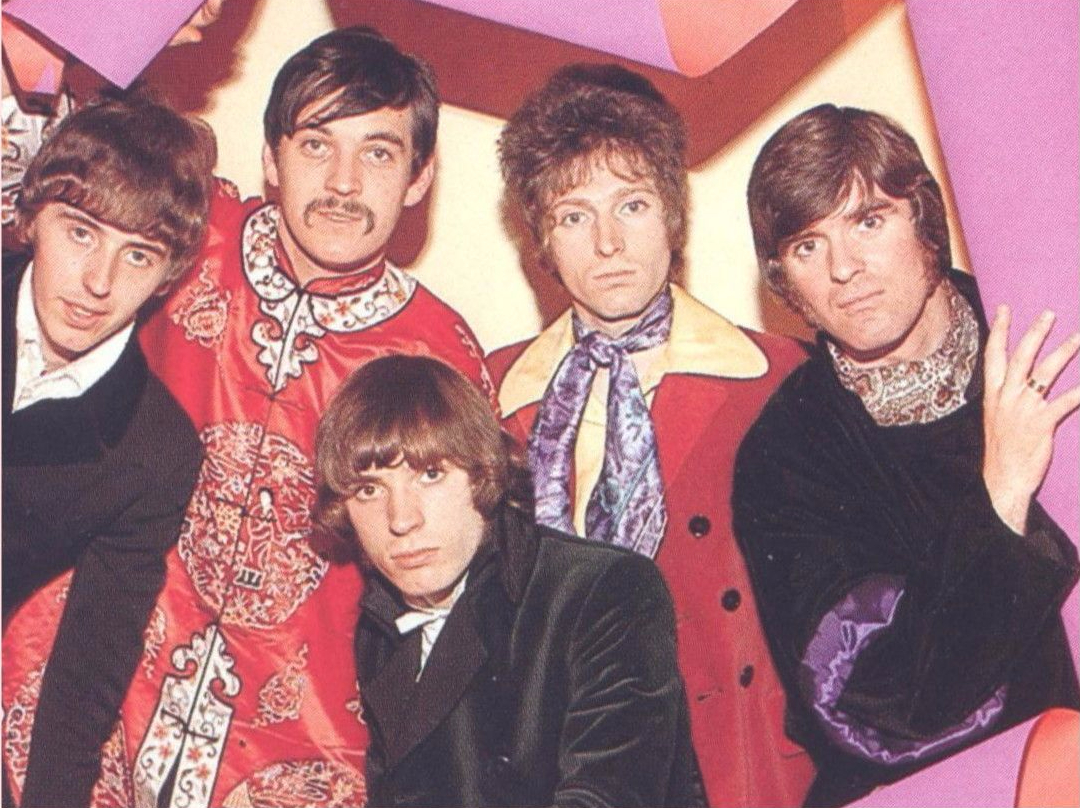
The Intro
I’ve been blogging my reviews of all the UK number 1s in order for four months now, and have reached the end of 1957. Despite not being a fan of 50s music in general (maybe that’s a bit harsh, I should say I’m not too knowledgeable about it), I’ve found it more interesting than expected. Hopefully, some of the readers I’ve gathered are enjoying it too.
Anyway, I decided a nice addition for Christmas would be to work my way through every Christmas number 1 to date. Now, I love music, and I’m also fond of Christmas, so initially it sounds like a no-brainer. However, Christmas number 1s are a complete wild card. No matter the decade, no matter your musical taste, it would be impossible to enjoy them all. Indeed, after a first glance, I realised there are far fewer festive songs than you’d maybe expect. From children’s songs, to rock’n’roll and psychedelic classics, to total, utter dross, the Christmas number 1 offers examples of the mammoth highs and terrible lows of pop music over the last 65 years. And although sadly pop is no longer the cultural force it once was, the Christmas number 1 is still considered important. So much so, they even bring Top of the Pops back especially for it.
So, 69 songs (if a number 1 was a double A-side, I’ve included both), 4 hours and 15 minutes of seasonal chart-toppers, broken down into decisions on the best and worst of each decade, and then one overall winner. With two young children in my house, it would be impossible to take on this task in one sitting. So I decided to do it while working my day job, which today is working on, appropriately enough, the Christmas TV listings for TV Times. I think I already know which song will win out. Let’s see if I’m right…
The 50s
The 50s songs went by in a blur. This could be because I started listening at 7.30 in the morning and didn’t have enough caffeine in me, but it’s also because the charts didn’t start until 1952, and most tracks were pretty concise back then. In fact the first ever Christmas number 1 was the first ever chart-topper – Al Martino’s Here in My Heart. With pop music in its infancy, the yuletide number 1 wasn’t yet an event, and there wasn’t a festive-themed chart-topper until crooner Dickie Valentine’s Christmas Alphabet in 1955, which is a slight but charming enough number. You could perhaps argue Winifred Atwell had kicked things off the year previous, with the piano knees-up Let’s Have Another Party – it contained a snatch of When the Red Red Robin. Harry Belafonte’s Mary’s Boy Child in 1957 was the last explicitly Christmas song to reign until Slade’s Merry Xmas Everybody, 16 years later.
Elvis-mania changed pop forever and rock’n’roll ruled the roost in the late 50s. For me, this is where music started to get interesting, so it’s probably no coincidence that one of my favourites of the 50s was the last – Emile Ford and the Checkmates’ clever and cocky What Do You Want to Make Those Eyes at Me For? (1959), later covered by Shakin’ Stevens.
The Best:

Johnnie Ray –Just Walkin‘ in the Rain (1956): One of rock’n’roll’s pioneers, the eccentric, troubled ‘Mr Emotion’ sang this melancholic yet strangely cheery song written by two men languishing in prison. It’s not seasonal in the slightest, it’s just a great song by an influential but under-appreciated talent. One listen and you won’t be able to resist whistling the refrain. I can’t whistle, but this is one of the few times I wished I could.
The Worst:
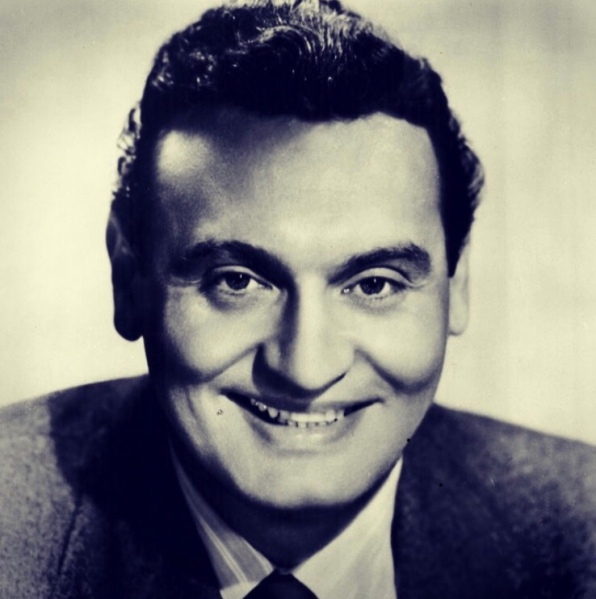
Frankie Laine with Paul Weston & His Orchestra – Answer Me (1953): The hardest part of blogging about many of those early number 1s was wading through the sea of near-identical overwrought ballads. The majority of them leave me cold, and despite Frankie being able to hold a note well, this did nothing for me. Hilariously, the BBC banned it at the time due to the then-shocking mention of God in the lyrics, which only increased its sales. The BBC clearly never learnt its lesson, as this wasn’t the last time this happened to a future number 1.
The 60s
Pop music evolved at a mind-blowing rate and came of age during this decade. Obviously the 60s were dominated by the best group of all time, The Beatles, and they also hold the record for most festive number 1s to date, with four in total – I Want to Hold Your Hand (1963), I Feel Fine (1964), Day Tripper/We Can Work it Out (1965) and Hello Goodbye (1967). Never anything but a pleasure to listen to, John, Paul, George and Ringo played a large part in making this decade’s list pretty darn enjoyable. The classic Moon River, sang by Danny Williams, topped the charts in 1961, and Elvis also got a look-in, with one of his better tracks – Return to Sender, in 1962.
In the latter half of the decade, children’s records grew in popularity, and were obviously going to sell well in December, beginning the trend for novelty Christmas number 1s. The Scaffold’s Lily the Pink (1968) may be irritating but served it’s purpose, and my five-year-old seemed to love it recently. More problematic is Rolf Harris’s Two Little Boys in 1969. Finding out what a pervert Rolf Harris was, under everybody’s radar, for so long was like finding out there’s no such thing as Father Christmas, yet this tune seems somehow still strangely moving, and now sadder than ever, because he’s bloody ruined it for everyone.
The Best:

The Beatles – Hello Goodbye (1967): It was always going to be a Beatles song. I did struggle between Day Tripper and Hello Goodbye, though. Despite the former’s killer riff, I decided to go with the latter, as I’m a sucker for most psychedelic 60s stuff. Although it’s not the Fab Four’s best example of pyschedelia, I love it’s joyous simplicity, and especially the singalong at the end, which is lie-affirming pop at its best. I also think it would make for a hilarious funeral song.
The Worst:

Cliff Richard and The Shadows – I Love You (1960): Look at that title, it’s as generic as it gets, which at least sets the scene for the song itself. Tepid, basic and very forgettable, it’s no wonder it’s been largely forgotten. Cliff of course became a festive staple in the 80s. Whatever you might think of his later yuletide tunes, you’d find it difficult to argue that they’re not better than this.
The 70s
It was in this decade that the idea of the Christmas Number 1 really became an event, beginning with Slade and Wizzard’s battle for best festive anthem in 1973. An honourable mention for fellow glam rockers Mud’s Elvis tribute Lonely This Christmas (1974) – always had a soft spot for that one. Benny Hill’s children’s song Ernie (The Fastest Milkman in the West) in 1971 was deceptively filthy – I’ve never realised just how smutty the lyrics were until today (although to be fair I probably haven’t heard it in full since I was about seven).
Several ‘classics’ also hit the top, and having long since grown bored of Queen’s Bohemian Rhapsody (1975), I was impressed by it for the first time in years. It’s complexity and sheer oddness really made it stand out during my mammoth listen, and I didn’t mind hearing it again once I reached the songs of the 90s (it was of course reissued following Freddie Mercury’s death in 1991). Wings’ Mull of Kintyre (the biggest single of the decade) seems to be either loved or hated – I just think it’s alright – but who remembers it was actually a double A-side, along with the long-forgotten rocker Girls School (which fared far better in the US) in 1977? Mary’s Boy’s Boy Child – Oh My Lord (1978) saw Boney M cover Belafonte’s 1957 tune, livening it up but increasing the tackiness tenfold.
I find it hilarious and brilliant that Pink Floyd’s dark disco classic Another Brick in the Wall (Part 2) was 1979’s festive bestseller. I don’t know about you, but nothing says Christmas more than a choir of children singing ‘We don’t need no education/We don’t need no thought control’ with an air of menace.
The Best:
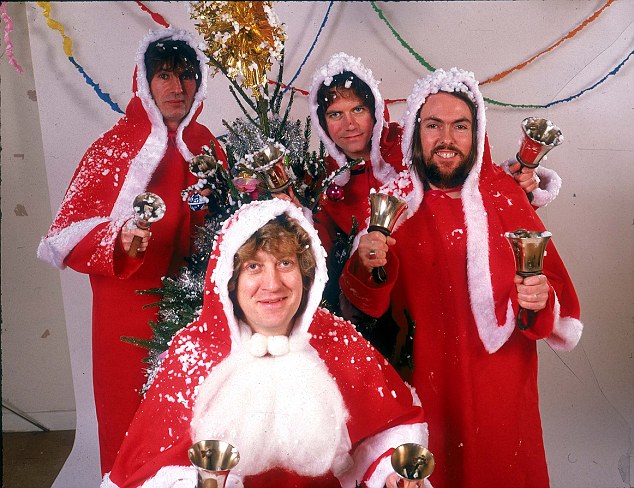
Slade – Merry Xmas Everybody (1973): Overfamiliarity hasn’t dimmed my love of Noddy bellowing ‘IT’S CHRRIISSSTTTMMMAAASSS!’, and although I sometimes think I prefer Wizzard’s I Wish It Could Be Christmas Everyday, it was Slade that won out back then, so it was Slade I heard today, finally bringing some yuletide cheer back into my rundown, and doing it with such wit and a tune that still holds up so well. I think the fact the production doesn’t labour the festive theme, unlike some of the songs yet to come, only adds to its brilliance.
The Worst:

Jimmy Osmond – Long Haired Lover from Liverpool (1972): Jesus Christ. That’s the only thing I can say about this that’s remotely festive, but it’s not meant as a compliment. I know the Osmonds were huge back then but I fail to see how anyone ever found this remotely appealing. It’s memorable I guess, but so is a bout of diarrhoea. My ears were genuinely pained when Jimmy hit the high notes, and it seemed to go on forever.
The 80s
I was born in 1979, so it’s this decade that takes me back to Christmas as a child. One of my earliest memories is of clutching my copy of Do They Know It’s Christmas? (1984) in the playground before taking it to a school Christmas disco, aged five. A landmark moment in music, it was of course the start of charity singles gunning for the all-important top spot, and it’s a classic, but it’s controversially not even in my top two 80s number 1s. And the less said about the Stock, Aitken and Waterman-produced Band Aid II version (1989), the better. I wondered why it had been airbrushed from history and I was only 20 seconds in before realising why. It’s total crap.
The quality of the number 1s really jumped about in the 80s, particularly the first half. Special mention must go to The Human League’s electro classic Don’t You Want Me (1981). I really struggled to decide whether this was my 80s favourite, or the one that just pipped it to the post. It may not be seasonal in the slightest, but I’m not purely judging these singles on festive merit, which is why Do They Know It’s Christmas?, the highest-selling festive chart-topper of all time, isn’t the winner.
Warm memories of the reissue of Jackie Wilson’s Reet Petite in 1986, originally from 1956, were rekindled. And although it’s terrible, I found myself amused by Renée and Renato’s Save Your Love (1982), because it’s damn funny and it reminded me of the Kenny Everett spoof. Plus I think my mind might have started unravelling by this point. You can certainly argue that Cliff Richard’s Mistletoe and Wine is tacky shit, but nostalgia can really affect critical judgement, so I won’t be agreeing, sorry.
The Best:
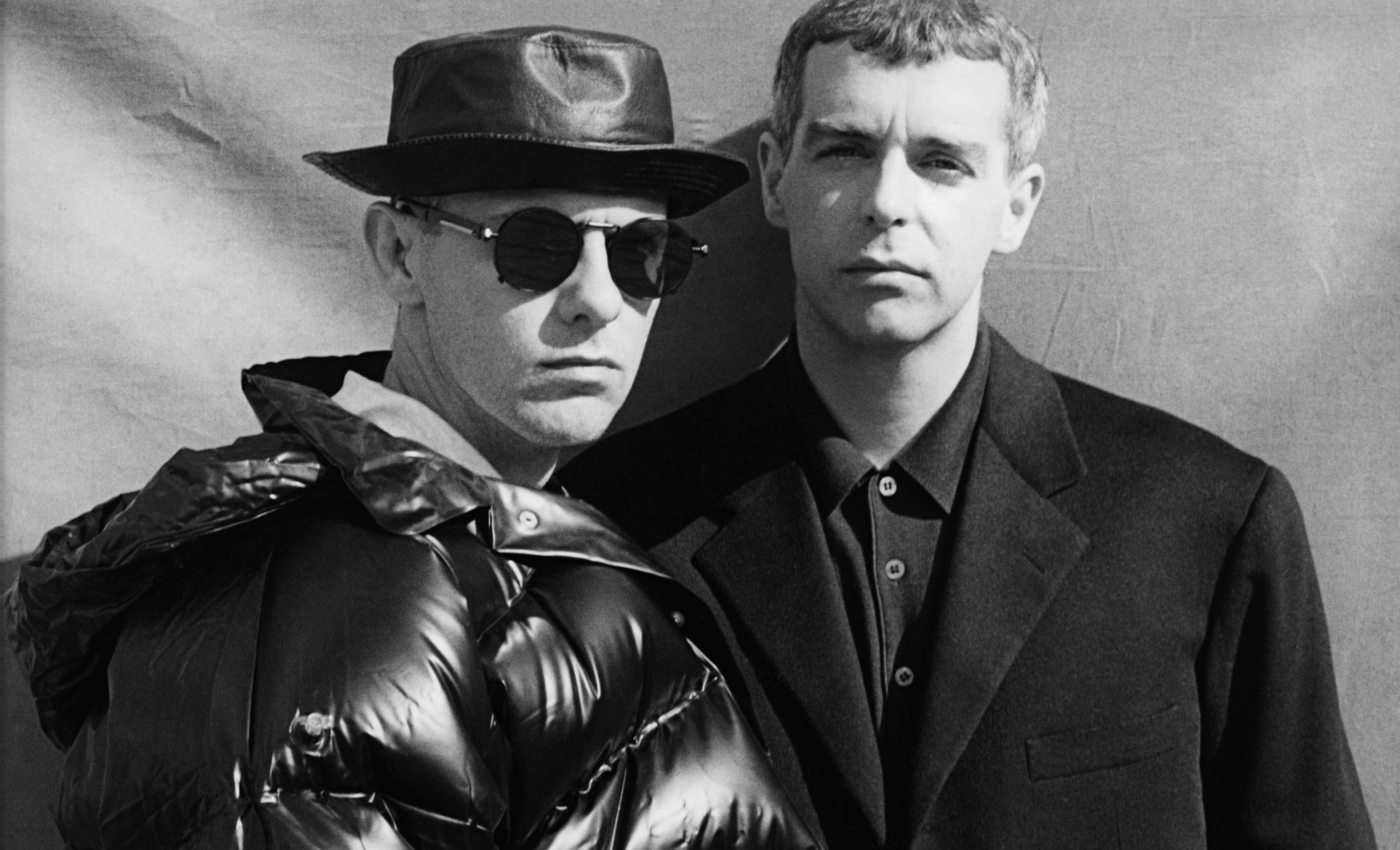
Pet Shop Boys – Always on My Mind (1987): I feel this may be a controversial choice due to it having nothing to do with Christmas, and the fact it kept Fairytale of New York from number 1, but I picked it because it’s bloody brilliant, and for me, this cover of the ballad made famous by Elvis gets better with age. Taking a great song, transforming it and improving upon it is no easy task, but Nick Tennant and Chris Lowe did so without any of their usual irony, simply turning it into a disco juggernaut. There’s no wonder it often finds itself in the upper reaches of lists of best cover versions of all time. Joss Ackland didn’t half used to scare me in the video, though.
The Worst:
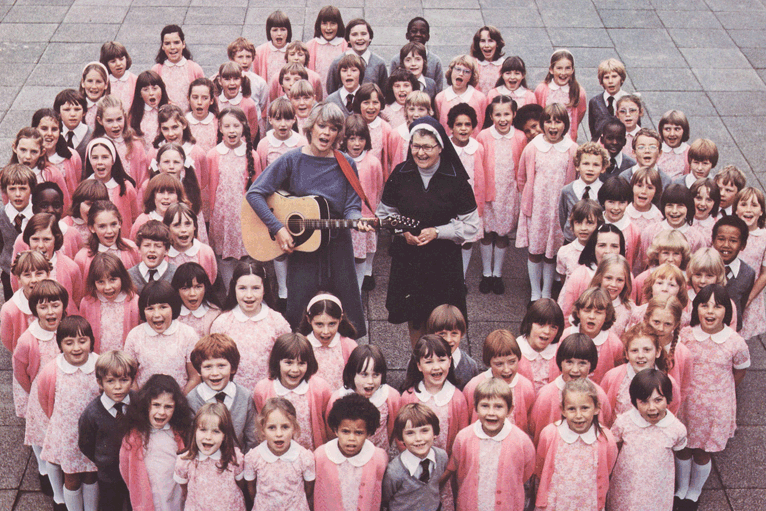
St Winifred’s School Choir – There’s No One Quite Like Grandma (1980): Like Pet Shop Boys, this kept a festive classic off the top, namely Jona Lewie’s excellent Stop the Cavalry. However, unlike Pet Shop Boys, it’s wretched. And did a nation coming to terms with the murder of John Lennon really pick this over reissues of his work? A perfect example of Christmas chart insanity, like Long Haired Lover from Liverpool before it, this grates big time. And yet, I’d still take it over some of the ‘serious’ work that’s yet to come…
The 90s
The Christmas number 1s of the late 80s had marked the turning point, in which the standard began to fall, with occasional exceptions. I knew this before beginning my foolhardy task, but failed to appreciate how painful the job was going to become. Cliff had his third and final appearance to date (he was part of Band Aid II) with the execrable Saviour’s Day (1990) (The pan pipes! Not the pan pipes!), in which he came up with his own, duller version of Christmas. No thanks, Cliff, we’re happy with mistletoe and wine. Queen pared up Freddie Mercury’s farewell, These Are the Days of Our Lives, with a reissue of 1975’s Bohemian Rhapsody (1991), and I was tempted to award the best of the decade to the latter, but in the end it seemed unfair to let it have two chances.
By this point in my youth I was starting to develop my own tastes, and my music snobbery had begun. I hated the seemingly eternal reign of Whitney Houston’s I Will Always Love You back in 1992, and it didn’t do much for me in 2017 either. I did appreciate Houston’s singing more than I used to, though. It’s the production that kills it. Mr Blobby (1993)… this track came up more than any other when I told people what I would be doing, as though this would be the ultimate form of torture. You know what? It wasn’t. I genuinely found myself laughing at it. The people behind it were sick geniuses, throwing every trick in the book to seemingly irritate and infuriate anyone who didn’t watch Noel’s House Party. In fact, after rehearing it, I genuinely wouldn’t be surprised if one day it turned out to be yet another prank by twisted geniuses The KLF. Just as insane in it’s own way was Michael Jackson’s Earth Song in 1995. Fair play to the self-proclaimed ‘King of Pop’ for trying to highlight the damage humans have done to the world, but heavily implying he was some kind of Messiah-like figure while doing so was a bit daft.
Who would have thought that East 17 would be one of the decade’s few Christmas highlights with Stay Another Day (1994)? Then and now I found the Walthamstow gang ridiculous, but I have to hand it to songwriter Tony Mortimer, Stay Another Day is a great song, especially when you know it was written about his brother, who committed suicide. Poor old troubled Brian Harvey sings it well, too. He veers out of tune at times, but that fits perfectly in the context of this song. I admire the chutzpah of tacking on bells at the end, but it’s a shame it was then adopted by seemingly every other boy band aiming for a number 1 on 25 December.
The Best:
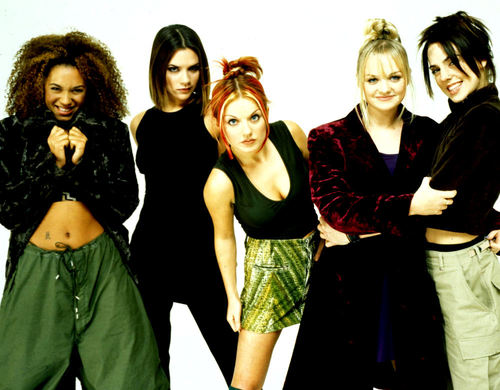
Spice Girls – 2 Become 1 (1996): I have an inkling this may also be a controversial choice, mainly for people who know me. Back in the day I claimed to hate the Spice Girls. I was a huge Britpop fan and I blamed them for ruining pop music by not being ‘for real’. It didn’t occur to me that many guitar-bands were running out of steam, or becoming so experimental, they were never going to maintain their followings. Now I’m nearly 40, I’m less concerned with whether a song is ‘cool’ or not, and grudgingly admit the early Spice Girls singles were great pop songs. You have to make room for love ballads at Christmas, and 2 Become 1 is a great example of one. I’ve even been known to listen to it outside of Christmas. And you have to admire the fact it gets a cheeky reference to wearing a condom in there. Their next two yuletide number 1s, Too Much (1997) and Goodbye (1998), were tosh, though.
The Worst:
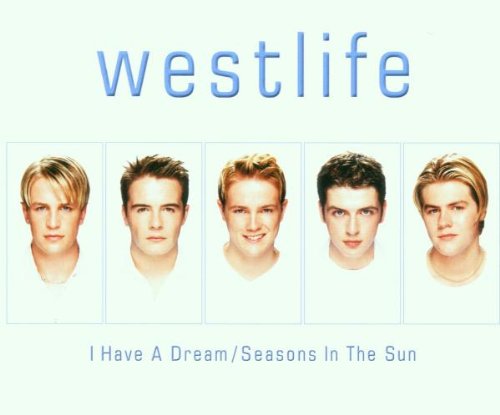
Westlife – I Have a Dream/Seasons in the Sun (1999): This was the easiest choice to make by far. I hated Westlife for being the final number 1 ‘artists’ of the 20th century. Was this really what the last 50 years of pop had been leading up to?! Time has certainly not changed my mind. I’d forgotten this was coming up so soon, and as the Irish boy band’s tepid cover of ABBA’s I Have a Dream began, I wanted to punch my ears. Only problem is, that would have pushed my earphones further down my now long-suffering hearing vessels, and thus increasing the torture. The next two or three minutes were vacuous, contemptible, cynical pap, but at least it would soon be over. Fuck! It’s a double-A-side! And they’ve had a go at a song about dying! I think Seasons in the Sun is actually even worse! This single only deserves to be the final number 1 of the millennium because it signposts the downward trajectory in quality and worth of the charts in the 21st century to date. But I’d rather listen to There’s No One Quite Like Grandma than ever suffer these two songs again.
The 00s
Before Simon Cowell did irreparable damage to December’s charts with the X Factor, there were a few more years of oddities. At 21, I had no time for Bob the Builder’s Can We Fix It? back in 2000, but coming after Westlife in my marathon listen, it was actually easy on the ears. It’s quite funny to think Neil Morrissey has had a number 1 with a dance anthem. Robbie Williams & Nicole Kidman’s Something Stupid (2001) seemed rather pointless, then and now. Girls Aloud had won Popstars: The Rivals in 2002, and Sound of the Underground still sounds like one of the few reality show songs that wasn’t a power ballad put together by a committee. Perhaps if talent show winners were still releasing songs like this, The X Factor wouldn’t finally be dying a slow death.
Michael Andrew and Gary Jules’s haunting cover of Tears For Fears’ Mad World (from the film Donnie Darko) seemed an appropriate choice after the conflict in Iraq in 2003, but strikes me as simply too downbeat now. Easily the most depressing track in the collection. The 20th anniversary of Do They Know It’s Christmas? brought about yet another version, and while Band Aid 20’s cover is better than Band Aid II, it goes on way too long and sounds too earnest. Speaking of earnest…
The second series of The X Factor in 2005 was where the Christmas charts were first hijacked. The next five years were wall-to-wall Cowell. Manufactured MOR with a revolving door of singers, some who have long since been forgotten about. Alexandra Burke’s Hallelujah (2008) was the only remotely memorable one, and that’s undoubtedly due to me loving Jeff Buckley’s version of the Leonard Cohen classic, which was that year’s runner-up.
The Best:
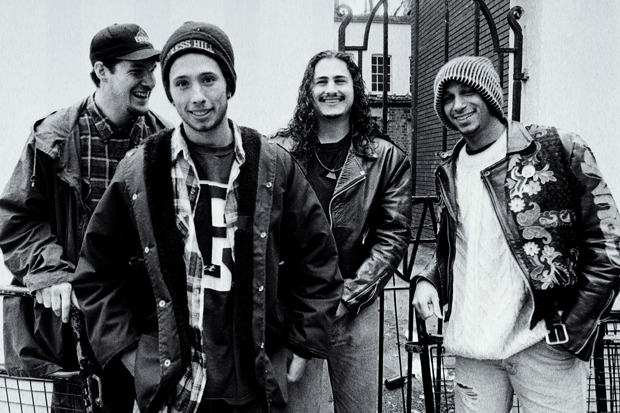
Rage Against the Machine – Killing in the Name (2009): By the close of the 00s, some record buyers had had enough of Cowell’s dominance. Beginning an internet campaign which quickly snowballed, Zack de la Rocha and co’s rap-metal call for revolution from 1992 was the perfect antidote to yet another lightweight pop ballad. After suffering so much tripe beforehand I was on the verge of shouting ‘THANK FUCK’ in the middle of the office. Although it wasn’t the end of X Factor number 1s, Rage Against the Machine had inflicted serious damage to their stranglehold of the charts.
The Worst:
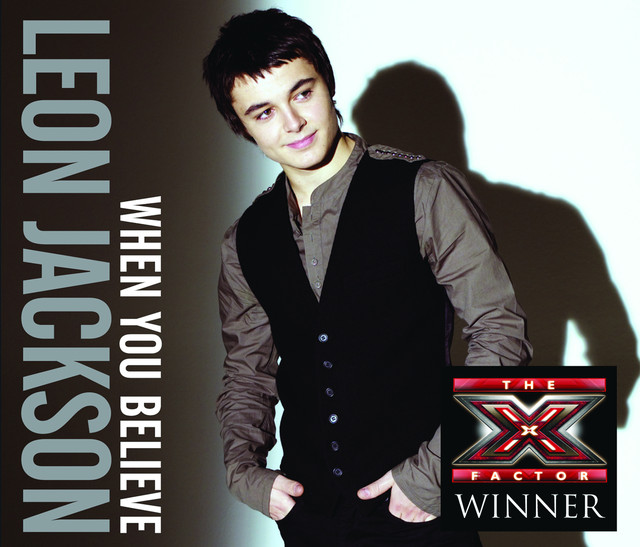
Leon Jackson – When You Believe (2007): Jackson won the fourth series of the X Factor with this cover of a power ballad sung by Whitney Houston & Mariah Carey for the animation The Prince of Egypt in 1998. Dreary and tedious, it’s a throwback to some of the very first number 1s of the early 1950s and the worst X Factor Christmas number 1. I don’t think Jackson has been seen since – another victim of Cowell’s ruthlessness.
The 10s
Rage Against Machine had given the list a much-needed kick up the arse, but I don’t think it was just the potential lethargy my ears were suffering that caused the remaining tracks to be a tough listen. In addition to further X Factor tracks, charity singles became very popular once more, beginning with Wherever You Are by Military Wives with Gareth Malone in 2011. Lewisham and Greenwich NHS Choir’s A Bridge over You (2015) was along similar lines, combining Simon and Garfunkel’s Bridge Over Troubled Water and Coldplay’s Fix You. I don’t want to belittle charity singles, but the combination of these and yet more talent show winners made for a very musically uninspiring final few tracks.
Some potential hope for the future came with the last song of all. Rockabye (2016), by Clean Bandit featuring Sean-Paul and Anne-Marie, broke the malaise that had set in and was simply a modern pop song by a young group, just like in the old days. It didn’t do much for me personally, but pop should primarily be for the young, not a man who’s nearly 40, so fair play to them. Here’s hoping there’s further life in the charts for years to come.
The Best:
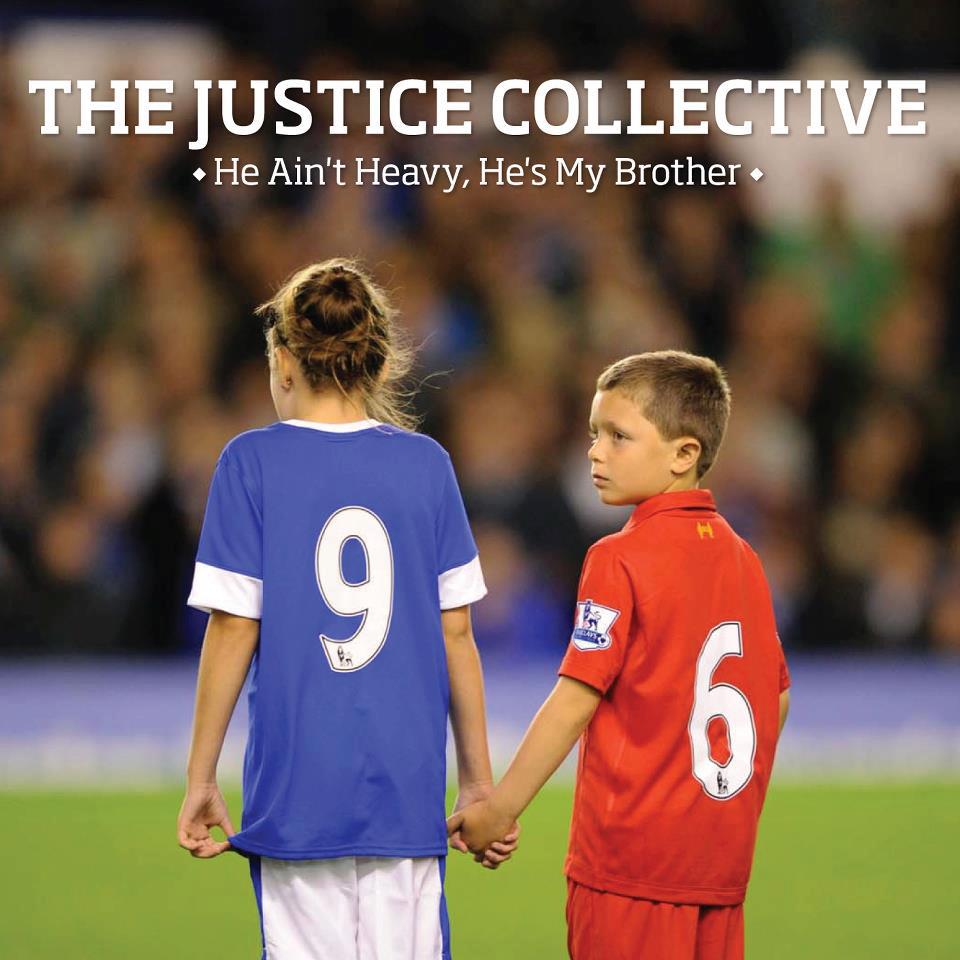
The Justice Collective – He Ain’t Heavy, He’s My Brother (2012): Adopting the Band Aid approach and featuring an all-star cast of musicians and celebrities, The Justice Collective was assembled by Peter Hooton of The Farm, in order to raise money for various charities associated with the Hillsborough disaster. Covering the classic Hollies track was an inspired choice, and it would be difficult to not be moved by this, whatever your thoughts on charity songs.
The Worst:
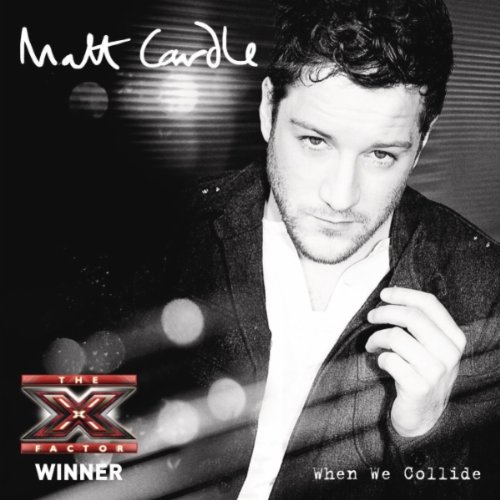
Matt Cardle – When We Collide (2010): Shock, horror – it’s another X Factor song! Matt Cardle won the seventh series and released a cover of rock band Biffy Clyro’s Many of Horror and renamed it, for some reason. That’s the most interesting thing I can say about this leaden waste of time.
The Best UK Christmas Number 1 Ever is…
Slade – Merry Xmas Everybody (1973): I predicted this would win beforehand, but I didn’t predict just how many non-festive songs it would be up against, so Noddy, Dave, Don and Jim almost won by default. That’s not to take anything away from their win though. If it wasn’t for their chart battle with Wizzard, would the Christmas number 1 be the annual event it still is today? Possibly not. Back in 1973, the UK was going through a rough ride, with strikes and power cuts, and Merry Xmas Everybody brought some light back into (literally) dark times. 44 years later, we need this song more than ever.
The Worst UK Christmas Number 1 Ever is…
Westlife – I Have a Dream/Seasons in the Sun (1999): I think I made my feelings on this clear earlier, but even thinking about the damage it did to my ears is making me angry all over again. Pop music at it’s very dreariest, and far more offensive than any of the novelty hits I’ve had to suffer. I expected my lowest-rated song to be from the X Factor conveyor belt, but I feel some degree of sympathy towards those artists involved. It’s the man behind them that’s the true villain of chart music.

The Outro
Well, that was quite an experience. Yes, you could argue putting myself through every Christmas number 1, only to ultimately rediscover my love for Slade and hatred for Westlife, was pointless, but, despite my forlorn face above, and lots of moaning within this feature, it’s made for a fascinating experience. Tracing the Christmas number 1s from the inception of the charts has been like following the history of pop itself, which is after all what this site is all about. And no number 1 single better captures the eccentricities of the record-buying public than the Christmas number 1, throwing some real curveballs in there. Of course, listening to a history of pop like this has highlighted how far chart music has fallen over the last few decades. But there is still some hope for the future. And while this four-hour-plus experience has left me somewhat scarred, I’m already wondering if next year I should make my way through every UK Christmas number 2… Maybe I have developed a form of musical Stockholm Syndrome?
Of course, everyone’s entitled to an opinion… why not tell me yours? Feel free to shout me down and leave a comment in the box below the list.
Every UK Christmas Number 1 (1952-2016)
1952: Al Martino – Here in My Heart
1953: Frankie Laine with Paul Weston & His Orchestra – Answer Me
1954: Winifred Atwell & Her ‘Other’ Piano – Let’s Have Another Party
1955: Dickie Valentine with Johnny Douglas & His Orchestra – Christmas Alphabet
1956: Johnnie Ray – Just Walkin’ in the Rain
1957: Harry Belafonte – Mary’s Boy Child
1958: Conway Twitty: It’s Only Make Believe
1959: Emile Ford and the Checkmates – What Do You Want to Make Those Eyes at Me For?
1960: Cliff Richard and The Shadows – I Love You
1961: Danny Williams – Moon River
1962: Elvis Presley – Return to Sender
1963: The Beatles – I Want to Hold Your Hand
1964: The Beatles – I Feel Fine
1965: The Beatles – Day Tripper/We Can Work It Out
1966: Tom Jones: Green Green Grass of Home
1967: The Beatles – Hello Goodbye
1968: The Scaffold – Lily the Pink
1969: Rolf Harris – Two Little Boys
1970: Dave Edmunds – I Hear You Knocking
1971: Benny Hill – Ernie (The Fastest Milkman in the West)
1972: Donny Osmond – Long Haired Lover from Liverpool
1973: Slade – Merry Xmas Everybody
1974: Mud – Lonely This Christmas
1975: Queen – Bohemian Rhapsody
1976: Johnny Mathis – When a Child Is Born (Soleado)
1977: Wings – Mull of Kintyre/Girls School
1978: Boney M – Mary’s Boy Child – Oh My Lord
1979: Pink Floyd – Another Brick in the Wall (Part 2)
1980: St Winifred’s School Choir – There’s No One Quite Like Grandma
1981: The Human League – Don’t You Want Me
1982: Renée and Renato – Save Your Love
1983: The Flying Pickets – Only You
1984: Band Aid – Do They Know It’s Christmas?
1985: Shakin’ Stevens – Merry Christmas Everyone
1986: Jackie Wilson – Reet Petite
1987: Pet Shop Boys – Always on My Mind
1988: Cliff Richard – Mistletoe and Wine
1989: Band Aid II – Do They Know It’s Christmas?
1990: Cliff Richard – Saviour’s Day
1991: Queen – Bohemian Rhapsody/These Are the Days of Our Lives
1992: Whitney Houston – I Will Always Love You
1993: Mr Blobby – Mr Blobby
1994: East 17 – Stay Another Day
1995: Michael Jackson – Earth Song
1996: Spice Girls – 2 Become 1
1997: Spice Girls – Too Much
1998: Spice Girls – Goodbye
1999: Westlife – I Have a Dream/Seasons in the Sun
2000: Bob the Builder – Can We Fix It?
2001: Robbie Williams and Nicole Kidman – Something Stupid
2002: Girls Aloud – Sound of the Underground
2003: Michael Andrews and Gary Jules – Mad World
2004: Band Aid 20: Do They Know It’s Christmas?
2005: Shayne Ward – That’s My Goal
2006: Leona Lewis – A Moment Like This
2007: Leon Jackson – When You Believe
2008: Alexandra Burke – Hallelujah
2009: Rage Against the Machine – Killing in the Name Of
2010: Matt Cardle – When We Collide
2011: Military Wives with Gareth Malone – Wherever You Are
2012: The Justice Collective – He Ain’t Heavy, He’s My Brother
2013: Sam Bailey – Skyscraper
2014: Ben Haenow – Something I Need
2015: Lewisham and Greenwich NHS Choir – A Bridge Over You
2016: Clean Bandit featuring Sean Paul and Anne-Marie – Rockabye





